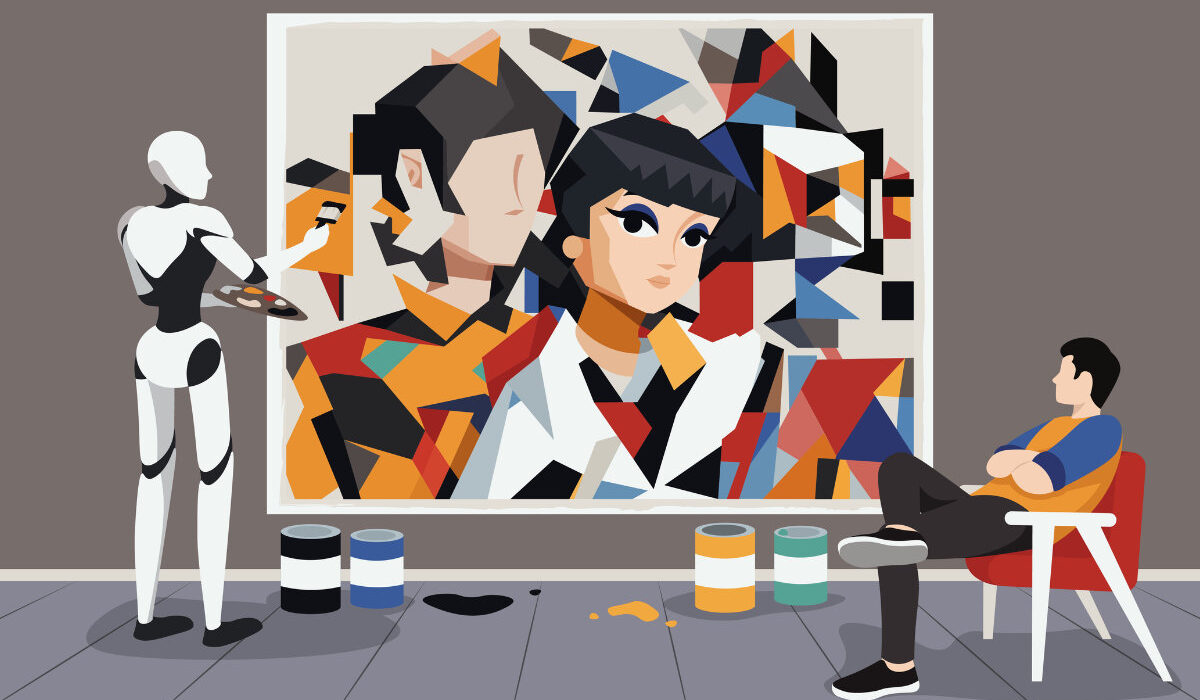GLOBAL
Artificial intelligence (AI) has the potential to make a major impact on many sectors of society over the coming decades. Some of these effects may be positive, others less so.
When ChatGPT was released, education, a profession that prides itself on integrity and high ethical standards, was rocked by the prospect that AI could allow students to cheat in their studies. The issue is still a live one.
Some educators have pushed for new policies from their institutions, including arguing for the return of face-to-face exams. Others thought AI might be a fad, waiting for it to go away.
Of course, AI isn’t going anywhere. As an educator myself, I wanted to explore how my profession could learn valuable lessons about embracing this new technology. The model for this new approach comes from art. Artists have long been exploring the intersection of technology and creativity.
One well-known artist who has embraced AI is the painter David Hockney. In June 2023, Hockney exhibited an AI-generated work on the Pyramid Stage at the 2023 Glastonbury Festival. Titled “I lived in Bohemia, Bohemia is a Tolerant Place”, the piece, created by Hockney using AI, was developed into a one-minute video to spread harmony through bohemianism.
Although this was his first AI-generated piece, Hockney is no technophobe. Over many years, he has used a variety of analogue and digital technologies in his work. These included the Xerox photocopier, Quantel Paintbox, and a computer graphics workstation. These stretched the sensory and creative potential of his eye. His recent immersive art installation in London: David Hockney: Bigger and Closer, is a testament to the artist’s reputation as an innovator.
Artistic embrace
Hockney is not alone. Many artists have found creative and innovative ways to use AI in their work. Robbie Barrat is a contemporary artist who explores the intersection of AI and art. He is known for his work with generative adversarial networks (GANs). This is where two machine learning systems compete with each other to produce better results. GANs have been used to create realistic artificial faces, becoming so good that people often cannot tell the difference between an AI-generated face and a real one.
In one project, Barrat trained a GAN on a dataset of classical nude paintings. He incorporated his own sketches and digital drawings into the trained GAN generating unique and surrealistic interpretations of the human form. By scanning or digitising sketches and feeding them into the AI model, he allowed the system to produce novel compositions. The resulting artworks showcased a fusion of his artistic style and learned AI patterns from the classical paintings.
Other artists have integrated AI with augmented reality (AR) and virtual reality (VR) to create immersive and interactive experiences.
Refik Anadol, for example, uses AI algorithms to process and interpret large amounts of data, transforming them into spectacular works of art. He incorporates these AI-generated visuals into AR and VR experiences to create mesmerising and interactive installations.
AI myth busting
Not every artist is so enthusiastic about the technology, of course. Many perceive image generators like DALL-E and Midjourney as a threat to their livelihoods rather than something to be welcomed. But the realisation that great artists such as Hockney and Anadol have deployed AI to enhance their work should teach us something. Educators should be exploring how to best use AI in their teaching and assessments.
The education sector’s reticence to adopt AI is perhaps understandable. Artificial intelligence is surrounded by myths and misconceptions. So it is worth debunking some of these fallacies.
The first is that AI impairs learning experiences. Some educators are concerned that if students rely on AI, their critical thinking and problem-solving abilities may be compromised, along with their capacity for learning independently. However, the key to successfully integrating AI into education is to understand that intelligent tools are not a replacement for human expertise. They are instead simply tools to augment and enhance it.
The second myth is that AI ‘isolates’ learners. While AI can provide personalised feedback and support, it cannot replace human interaction with an educator and the social and emotional learning that goes along with it.
Some academics fear that over-reliance on AI may result in students feeling disconnected from their peers and educators. In fact, educators can use AI systems to help students learn collaboratively in groups, allowing for collective problem-solving.
A third myth is that AI stifles creativity. The importance of creativity in higher education cannot be underestimated, yet many academics have expressed concern that AI will only stifle it.
Contrary to some beliefs, introducing AI as a technology can support and enhance creativity in educational settings. For example, generative AI tools can be used to promote divergent thinking, challenge expertise bias, assist in idea evaluation, support idea refinement and facilitate collaboration.
Preparing for the future
The fourth and final myth is that AI encourages learners to cheat at assessment. The continuing narrative around using AI to cheat doesn’t tell the whole story. By incorporating use of artificial intelligence effectively into the student’s assessment, we can help students become AI-literate, giving them skills they will need in life.
We should design authentic assessments that emphasise tasks requiring learners to apply knowledge, skills and understanding in real-world contexts.
AI can be used as a collaborative tool, a source of inspiration and a helpful guide. AI and education are intertwined, and learners will need to be able to work together with AI to prepare them for the world of work.
Artists have made the formerly unimaginable possible. Now educators can do the same, bringing their learners along for the ride, empowering them to become critical thinkers and creative problem solvers who are ready for a future where AI is commonplace.
Lucy Gill-Simmen is vice-dean for education and student experience at Royal Holloway, University of London, United Kingdom. This article is republished from The Conversation under a creative commons licence. Read the original article.

